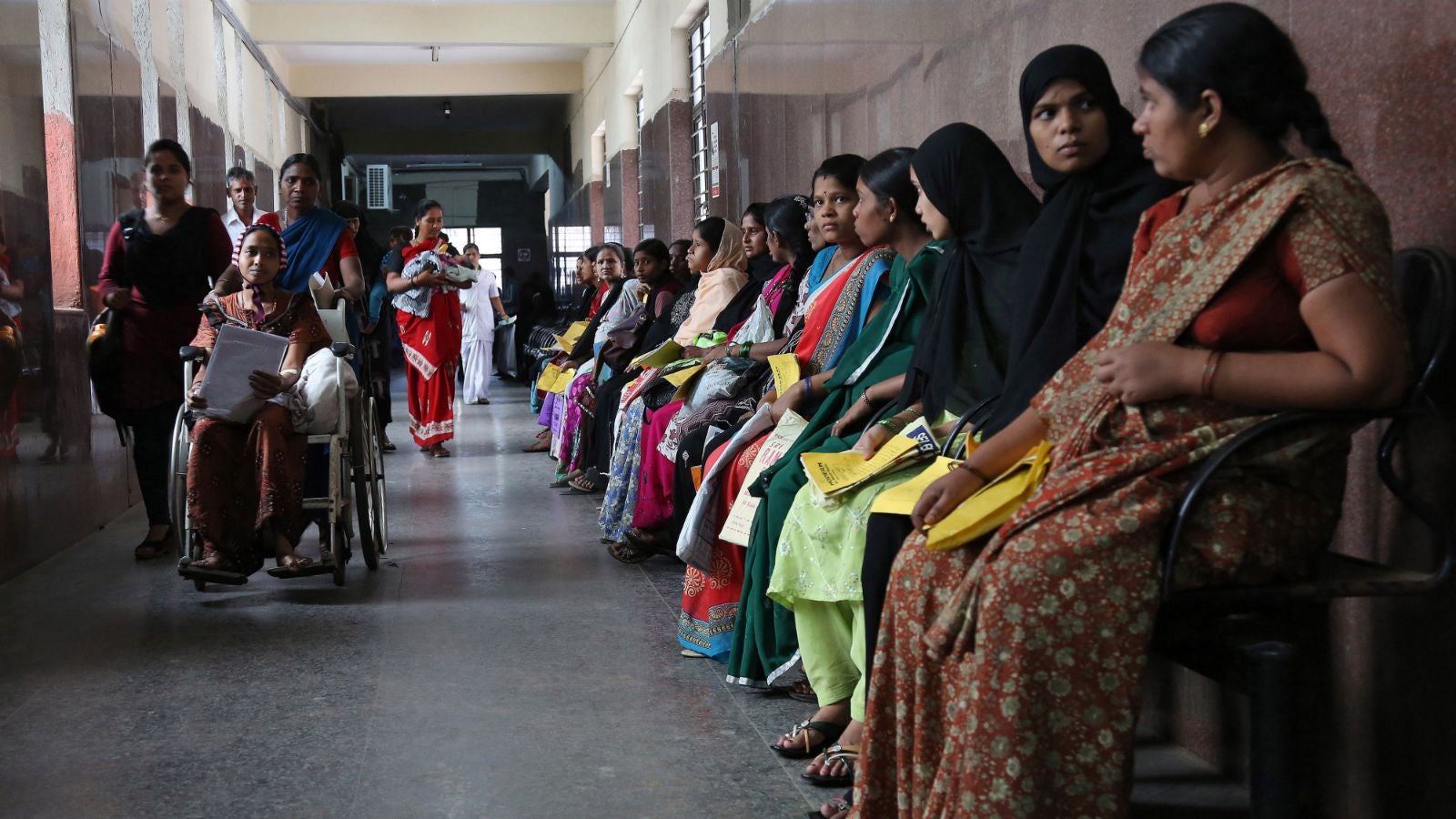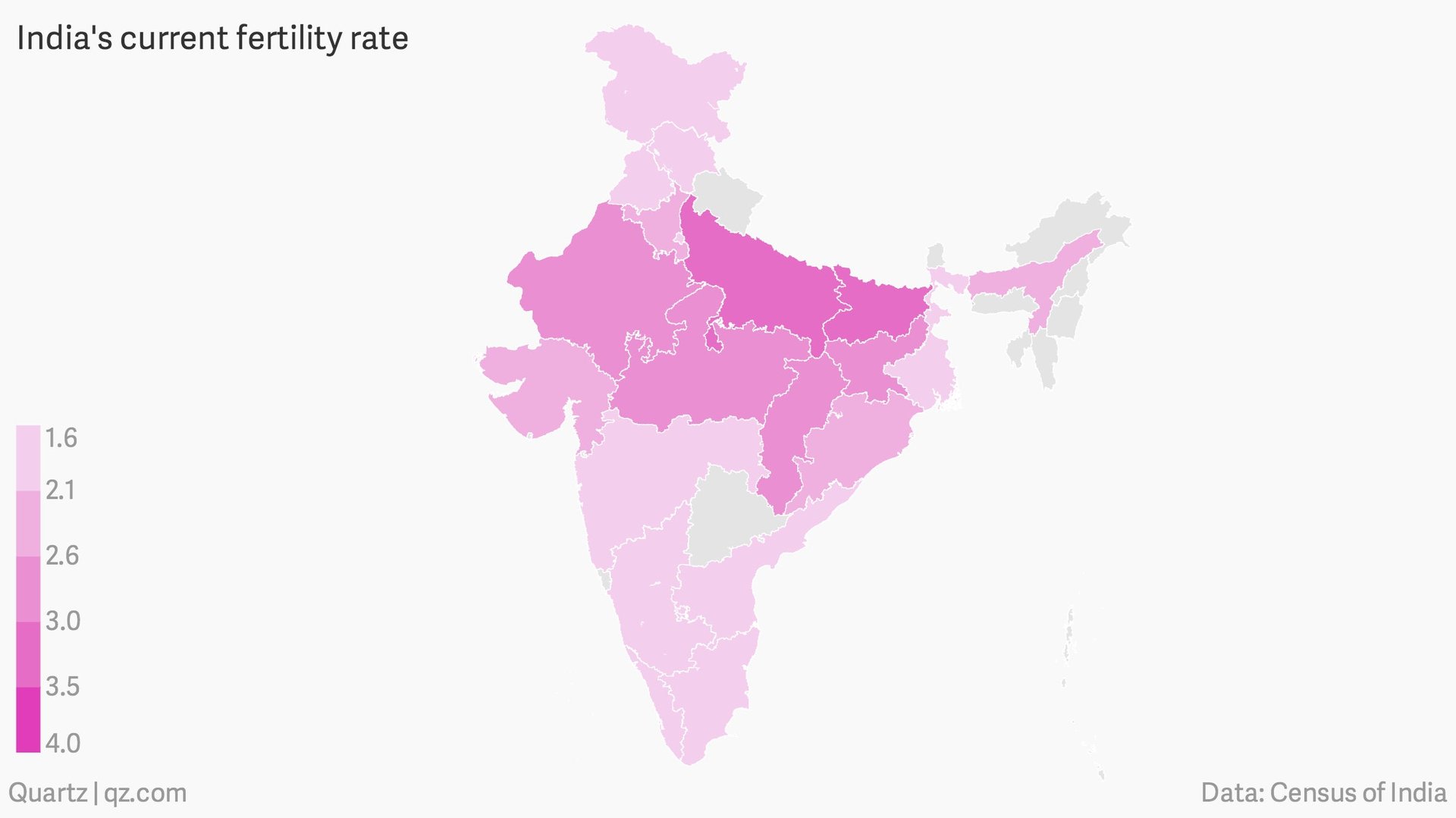Finally, India’s population growth is slowing down
Once seemingly unstoppable, India’s population juggernaut is finally slowing down.


Once seemingly unstoppable, India’s population juggernaut is finally slowing down.
The country’s total fertility rate—the average number of children expected to be born per woman—fell to 2.3 in 2013, marking a significant slowdown in population growth, compared to 3.6 in 1991.
Women in Bihar demonstrated the highest fertility rate at 3.4, while Kerala recorded the lowest at 1.6, according to the Sample Registration Survey by the Census of India that covered about 1.5 million households and 7.5 million people.
Since the survey was only conducted in India’s biggest states, no data was available for the smaller territories. The figures have been rounded off to one decimal point.

However, India’s 2.3 fertility rate is still short of the replacement level fertility of 2.1—the rate at which “a population exactly replaces itself from one generation to the next, without migration.”
Only some states—including West Bengal, Delhi, Himachal Pradesh, Punjab, Tamil Nadu, Andhra Pradesh, Kerala, Maharashtra, Jammu & Kashmir, Karnataka and Odisha—have been successful in attaining the replacement fertility rate.
There is also an urban-rural divide. On an average, women in villages have a fertility rate of 2.5, while that of urban residents stands at 1.8.
While government intervention, particularly through rising female literacy rates, have positively impacted (pdf) fertility rates, there is also a darker side to more direct population control measures. Less than a month ago, at least 11 women died and dozens more were hospitalized after undergoing sterilization surgeries at a government-sponsored camp near Bilaspur in Chhattisgarh. Despite target-based sterilization programme having been banned for over a decade, Indian women are often coerced into sterilization surgeries.
Birth and death rates
The survey also found that India’s crude birth rate in 2013 fell by 0.2 points over 2012. The crude birth rate is the number of births recorded in a year, per 1,000 population estimated at midyear. Since 2008, the decline has been 1.4 points.
The death rate, or the number of deaths recorded in a year per 1,000 population estimated at midyear, remained stable at 7 points. Odisha at 8.4 recorded the highest death rate, while Delhi at 4.1 recorded the lowest.
India’s total population is over 1.2 billion.